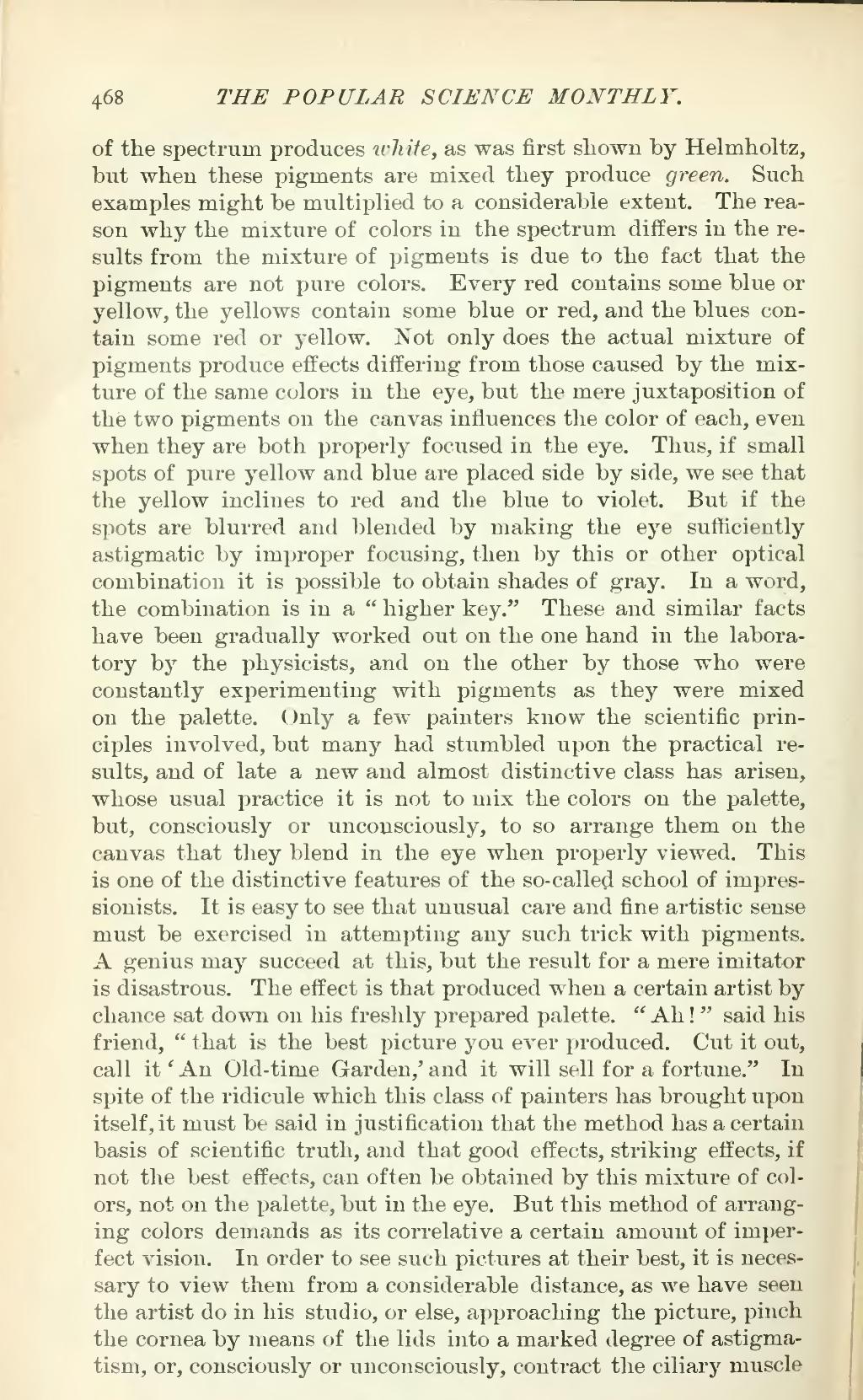of the spectrum produces white, as was first shown by Helmholtz, but when these pigments are mixed they produce green. Such examples might be multiplied to a considerable extent. The reason why the mixture of colors in the spectrum differs in the results from the mixture of pigments is due to the fact that the pigments are not pure colors. Every red contains some blue or yellow, the yellows contain some blue or red, and the blues contain some red or yellow. Not only does the actual mixture of pigments produce effects differing from those caused by the mixture of the same colors in the eye, but the mere juxtaposition of the two pigments on the canvas influences the color of each, even when they are both properly focused in the eye. Thus, if small spots of pure yellow and blue are placed side by side, we see that the yellow inclines to red and the blue to violet. But if the spots are blurred and blended by making the eye sufficiently astigmatic by improper focusing, then by this or other optical combination it is possible to obtain shades of gray. In a word, the combination is in a "higher key." These and similar facts have been gradually worked out on the one hand in the laboratory by the physicists, and on the other by those who were constantly experimenting with pigments as they were mixed on the palette. Only a few painters know the scientific principles involved, but many had stumbled upon the practical results, and of late a new and almost distinctive class has arisen, whose usual practice it is not to mix the colors on the palette, but, consciously or unconsciously, to so arrange them on the canvas that they blend in the eye when properly viewed. This is one of the distinctive features of the so-called school of impressionists. It is easy to see that unusual care and fine artistic sense must be exercised in attempting any such trick with pigments. A genius may succeed at this, but the result for a mere imitator is disastrous. The effect is that produced when a certain artist by chance sat down on his freshly prepared palette. "Ah!" said his friend, "that is the best picture you ever produced. Cut it out, call it 'An Old-time Garden' and it will sell for a fortune." In spite of the ridicule which this class of painters has brought upon itself, it must be said in justification that the method has a certain basis of scientific truth, and that good effects, striking effects, if not the best effects, can often be obtained by this mixture of colors, not on the palette, but in the eye. But this method of arranging colors demands as its correlative a certain amount of imperfect vision. In order to see such pictures at their best, it is necessary to view them from a considerable distance, as we have seen the artist do in his studio, or else, approaching the picture, pinch the cornea by means of the lids into a marked degree of astigmatism, or, consciously or unconsciously, contract the ciliary muscle
